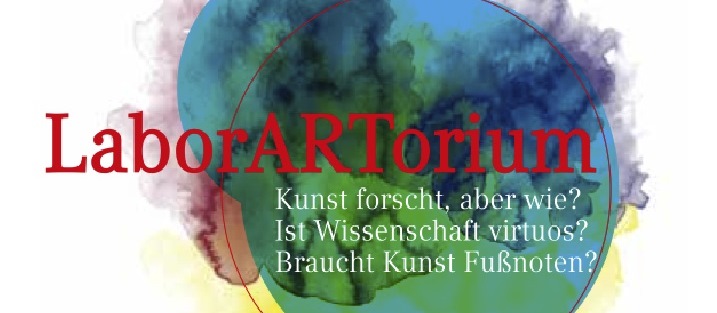Artistic Research as Elevator Pitch
Report on the “LaborARTorium” conference (Munich, December 6-7, 2013)
What is research? Julian Klein, one of the keynote speakers at the LaborARTorium conference organized by the ProART doctoral program of the Ludwig Maximillian University in Munich, turns this question into a common exercise called “ the Elevator Pitch” in which the core idea of an issue or project should be delivered in the time span of an elevator ride, or up to a maximum of 60 seconds. The audience, working in pairs, was thereby asked to define artistic research within this short time. Sandra Chatterjee and I, who were giving a joint presentation there, tried our best to reach a quick answer. We felt that we did a good job of splitting the process of research into three main phases: First there is a question, a topic of interest. Second, methods and ways of finding answers to this question have to be found. As a third phase we defined analyzing the collected data, which often means the production of new questions. Glad to have accomplished this rather difficult exercise within one minute, Julian gave us a second task: we were now asked to reflect on the communication process of the previous task by remembering what each of us had said. This second exercise was even more difficult — and, as Julian argued, it represented the artistic part of a research process: reflecting and perceiving the method of a (common) process.
Julian had pointed out his understanding of artistic research, in (primarily) denying that art is research through this practice-oriented introduction. Viewed against this background of art as a mode of perception, the phrase “art as research” appears less than accurate: it is research that becomes artistic rather than art that evolves into research. So the key question is not „Is art research?” but, rather, “When is research art?” Julian has already formulated the answer in one of his publications, which he quoted:
First, in the methods (such as search, archive, collection, interpretation and explanation, modeling, experimentation, intervention, petition,…), but also in the motivation, inspiration, in reflection, discussion, in the formulation of research questions, in conception and composition, in the implementation, in the publication, in the evaluation, in the manner of discourse – in order only to begin the list hereby. These phases can be summarized only posthoc and categorize, for example in the usual triple of object, method and product. This sequence is important: for the discussion on artistic research is not to fall into a normative restriction in a canonical system. (Klein 2010: online). (*1)
(*1)
But what is the result of this process? The result is the same as all“products” of a research process: The production of (extended) knowledge. Since art raises question such as “What is real?,” “How do we want to live?,” and “Might it all be different?,” it provides answers, specificially, often alternative options of perception. And this form of knowledge quite often deals with an artistic or aesthetic experience. Within this sense-based production of knowledge there is — as Julian calls it — embodied knowledge.
For me, Julian’s key note was the highlight of the conference, summarizing the main perspectives of several talks, performance lecturers, and presentations — as well as the presentation that Sandra and I did on “Looping Arts, Science and Management: Other Spaces as sites of collaborative knowledge production.” Most of the other speakers were arts historians or theatre studies scholars, and only a few were from a practical artistic field. The topics of the lectures — from “interaction of paintings and optics in the seventeenth century,” the “academization of a clown school,” to “The science of flowers” were quite interesting but too diverse to create a red line running through the conference. I would therefore like to thank Julian for his amusing and profound presentation — it certainly made the trip to Munich in pre-Christmas mode worthwhile!
Links:
Symposium Laborartorium. Forschung in Kunst und Wissenschaft
Institut für künstlerische Forschung, Julian Klein
Headerbild: Quelle: http://www.proart.marc.uni-muenchen.de/downloads/flayer_1-_3_.jpg
Siglinde Lang ( 2014): Artistic Research as Elevator Pitch. Report on the “LaborARTorium” conference (Munich, December 6-7, 2013). In: p/art/icipate – Kultur aktiv gestalten # 04 , https://www.p-art-icipate.net/artistic-research-as-elevator-pitch/



 Artikel drucken
Artikel drucken